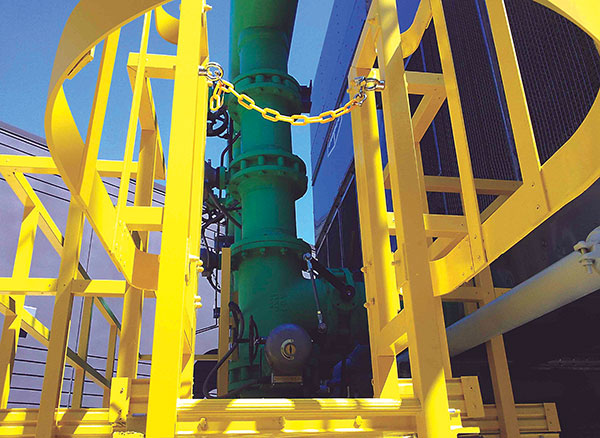October 2018, Vol. 245, No. 10
Corrosion Control
Minimizing Cost with Reinforced Polymer
By Eric Kidd, Bedford Reinforced Plastics
Corrosion is a costly maintenance issue that widely affects piping and other infrastructures across the globe. This is especially true in industries that deal with highly corrosive environments where water, moisture, salt spray and chemicals are a constant.
According to the World Corrosion Organization (WCO), the annual cost of corrosion worldwide is $2.2 trillion. That’s more than 3% of the world’s GDP. In the U.S. alone, a study conducted by the National Association of Corrosion Engineers (NACE) estimated that corrosion cost more than $42 billion in 2013.
When it comes to underground infrastructures, the U.S. Environmental Protection Agency (EPA) reported funding needed to repair or replace aging metal pipes and supporting structures could run as high as $325 billion over the next 20 years
– taking into account the cost of labor to maintain or repair these structures as well as the cost of materials need for replacement.
Advantage over Metal
While preventing corrosion in piping is a primary concern, preventing corrosion in surrounding pipe structures – such as platforms, stairs, catwalks, handrails, caged ladders and pipeline saddles – is also crucial to maintaining the overall integrity and function of the infrastructure as a whole.
Traditionally, steel and other metals have been the most widely used material in these types of piping applications. However, with metals, electrochemical corrosion is certainly an issue. Electrochemical corrosion occurs when the metal comes into constant contact with water or moisture, causing the metal to oxidize or rust.
This type of corrosion is especially prevalent and problematic in the marine, water and sewage industries, and can result in costly repairs. In addition, while certain measures can be taken to help prevent corrosion in metal piping and related structures (application of special coatings and surface treatments), the cost of regular upkeep can be staggering.
Piping constructed with fiberglass-reinforced polymer (FRP) has consistently proved its ability to resist corrosion and provide a longer service life compared to those made with metals, so it’s no stretch to assume the same outcome for related applications.
FRP is designed to withstand various types of corrosive conditions – such as frequent exposure to chemicals and vapors, acidic soils, temperature spikes and harsh coastal climates – providing a more durable structural solution for various industries.
The M-I Swaco facility in Louisiana is an example of industrial facility using FRP as a replacement material for corroding metal structures. The Gulf Coast salt water and the corrosive chemical additives used in mixing drilling mud at the facility had taken its toll. The existing painted steel structure of the mud mixing platform had been deteriorating over the years, requiring significant maintenance and upkeep.
To remedy the situation, FRP from Bedford Reinforced Plastics was selected as the replacement material for the mud mixing platform, stairs, ladders and handrails due to its corrosion resistance and ability to meet load requirements.
As an additional benefit, the FRP structures were light enough for workers to install by hand and maneuver around piping, tanks and tight spaces without heavy equipment.
In FRP, the risk of corrosion can be reduced by using specialized resins – such as isopthalic polyesters, vinylesters, or epoxies – to protect the glass fibers they surround. These resins are added during the impregnation or “wet out” phase of the pultrusion manufacturing process and are formulated to protect the final product against caustic or oxidizing chemicals, acidic or alkaline environments, extreme temperatures and UV rays. In addition to corrosion resistant resins, high-end corrosion resistant glass, such as E-CR glass reinforcement, can also be used to create more durable glass fiber reinforced composites.
According to a report by the WCO, at least 25 to 30% of annual corrosion costs could be saved if proper corrosion management practices were used. This includes the use of FRP as a replacement for corroding metal structures and as the favored material type for future applications.
Due to its extreme durability and resistance against the corrosive properties of chemicals, moisture, acidic soils, extreme temperature, UV rays and harsh coastal climates, FRP is low-maintenance and offers a long service life. These benefits alone help cut maintenance costs significantly – providing a long-term, cost-effective solution for a wide variety of industrial applications. P&GJ






Comments